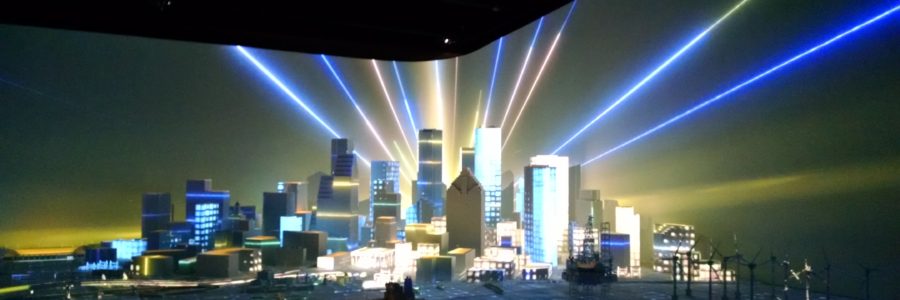
Redesigned Wiess Energy Hall 3.0 coming in November to Houston Museum of Natural Science
Featured “Energy City” and two motion platforms—the Geovator and Eagle Ford Shale Experience shine in new exhibit
Exhibit opens November 20th
It’s a sight to behold, and years in the making, but it’s completely worth it. When you see this state-of-the-art, completely innovative and interactive redesigned Wiess Energy Hall 3.0, you will be impressed!

“Wiess Energy Hall 3.0,” the third iteration of this popular hall has enlarged from its previous 8,500 square feet to an expansive 30,000 square feet—almost the size of a football field.
 Joining the completely redesigned “classic” displays is a bonanza of entirely new exhibits, making the new hall the most contemporary, comprehensive, and technologically advanced exhibition on the science and technology of energy anywhere in the world.
Joining the completely redesigned “classic” displays is a bonanza of entirely new exhibits, making the new hall the most contemporary, comprehensive, and technologically advanced exhibition on the science and technology of energy anywhere in the world.
Step off of the elevator into a convincingly realistic environment depicting the dynamic floor of a working, 21st century offshore drilling rig populated by a motley crew of sci-fi robots—an automated “top-drive” mechanism, pipe racker, and “iron roughneck.”
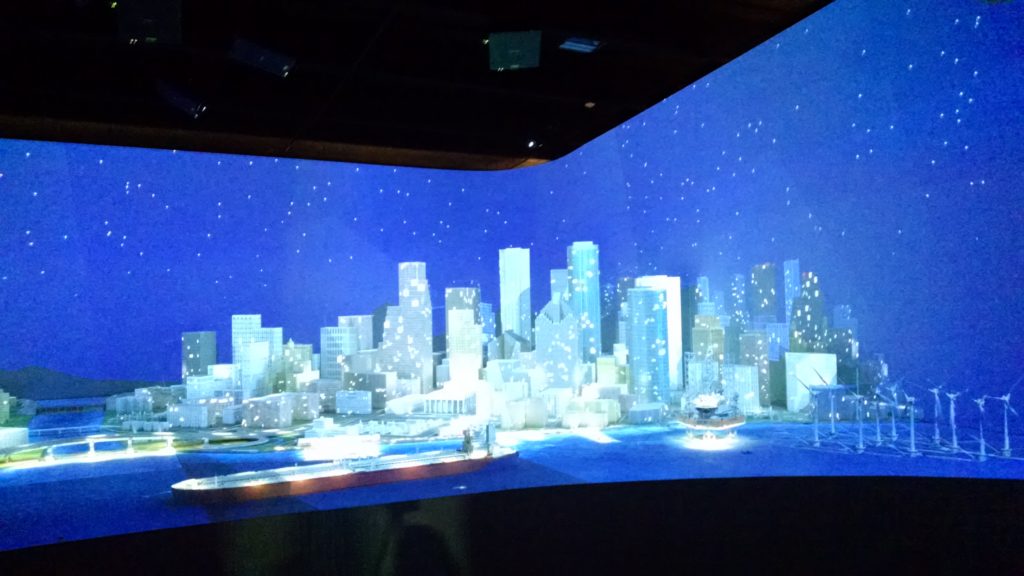 Then, a look at “Energy City,” a 2,500-square-foot 3-D landscape representing Houston, the surrounding Gulf coastal waters, and the terrain of southeast and central Texas.
Then, a look at “Energy City,” a 2,500-square-foot 3-D landscape representing Houston, the surrounding Gulf coastal waters, and the terrain of southeast and central Texas.
This vibrant 1/150th-scale “white model” uses bleeding-edge projection mapping technology to bring to life the energy value chain with dynamic animation as the entire tableau cycles from day tonight.
Highlights include drilling in the Eagle Ford Shale, oil refining, trainloads of oil and coal, liquefied natural gas terminals, nuclear plants, wind farms, power plants, solar thermal energy, along with a gleaming city skyline, sprawling suburbs, and streaming freeways.
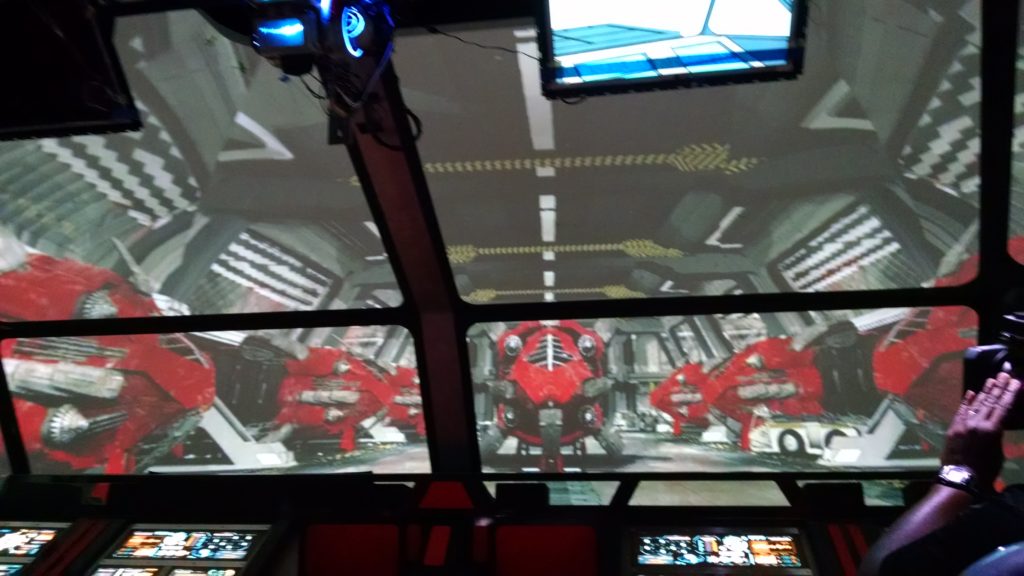
Adjacent to “Energy City”, the mammoth presence of the Eagle Ford Shale Experience, a.k.a. the “EFX 3000.” Step aboard for a wild ride out to prime Texas shale oil and gas drilling country and down into the borehole of an oil well, made real with curved projection techniques and mechanical motion effects. Reduced to microscopic size, the craft ventures into the narrow spaces of a hydraulic micro-fracture, surrounded by seemingly massive grains of proppant.
Not far away, the completely reinvented Geovator, now hosted by a holographic pilot, takes you on a reimagined fantastic voyage plunging down through the museum floors into the earth, then back in time to the Cretaceous Period for an attack by hungry pteranodons and a meteor strike, and finally a tumultuous ascent to the surface for a surprising conclusion.
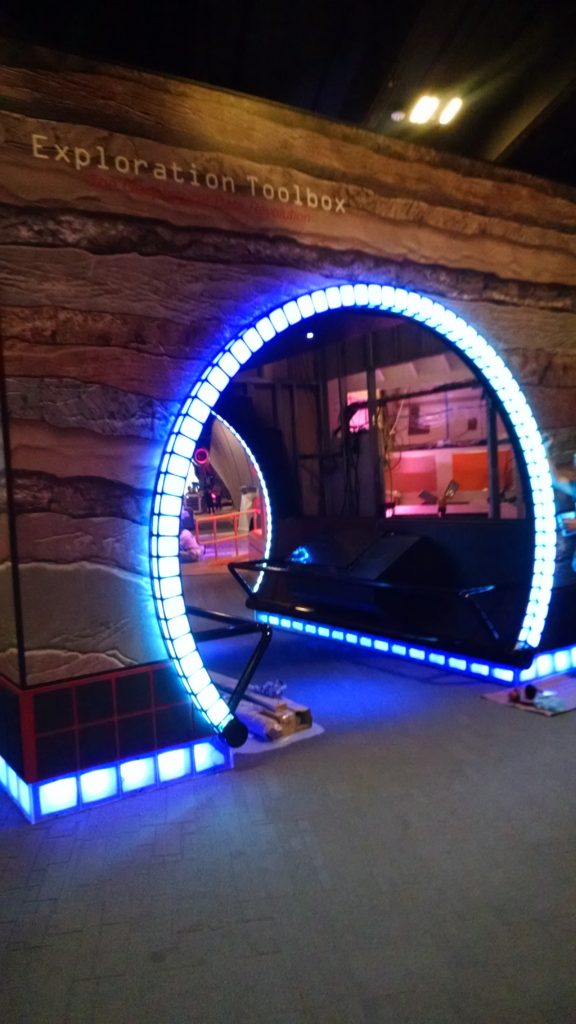 FUN FACTS TO KNOW:
FUN FACTS TO KNOW:
Energy City
- It took 8,800 person-hours to design and build
- Area of the model: 2,200 square feet
- 19340” x 40″ tiles comprise the model (including water and partial tiles on edge of the map)
- There are 2,148 individual assets on the map
- Two tiles were modeled/designed per day in order to keep to the production schedule
- There are 474cast houses based on 10 different designs
- There are 89fabricated downtown buildings
- There are 1103D-printed condos
- There are 273D-printed wind turbines
- There are 7123D-printed heliostats (mirrors) in the solar thermal array
- There are 385energy-related 3D-printed assets (refineries, geothermal, nuclear, etc.) NOT including solar mirrors and wind turbines
- The model is animated using 32 laser projectors of 8,000 lumens each
- The model rests on a base made of square steel tubing weighing 5 tons
- Actual downtown Houston buildings depicted = 12
- City Hall; Esperson Building; Calpine Center; Bank of America; JPMorgan Chase Tower; Pennzoil Place; Well Fargo Plaza; Enterprise Plaza; Chevron Building; Heritage Plaza; Jones Hall; Capital One Plaza
The Geovator
- 20 ft. x 20 ft. octagon, 10 tons
- 20 people worked on it
- Can transport 35 adults
- The journey through the earth and back in time and back to HMNS takes 7 minutes
- Captain Mercaptan, host of “Geovator 1.0” for 24 years (!), returns in “holographic” form to guide passengers in an all-new adventure aboard Geovator 3.0.
The Eagle Ford Shale Experience, aka the EFX3000
- 32 ft. long and 20 feet wide, 20 tons
- 25 people worked on it
- Can transport 42 people in individual seating
- The flight out to Karnes County, TX, voyage into the crevices of a hydraulic fracturing job in the Eagle Ford Shale, and then back home takes 10 minutes
- The EFX3000 is piloted by DAR-C, a crusty robot with a rebellious streak
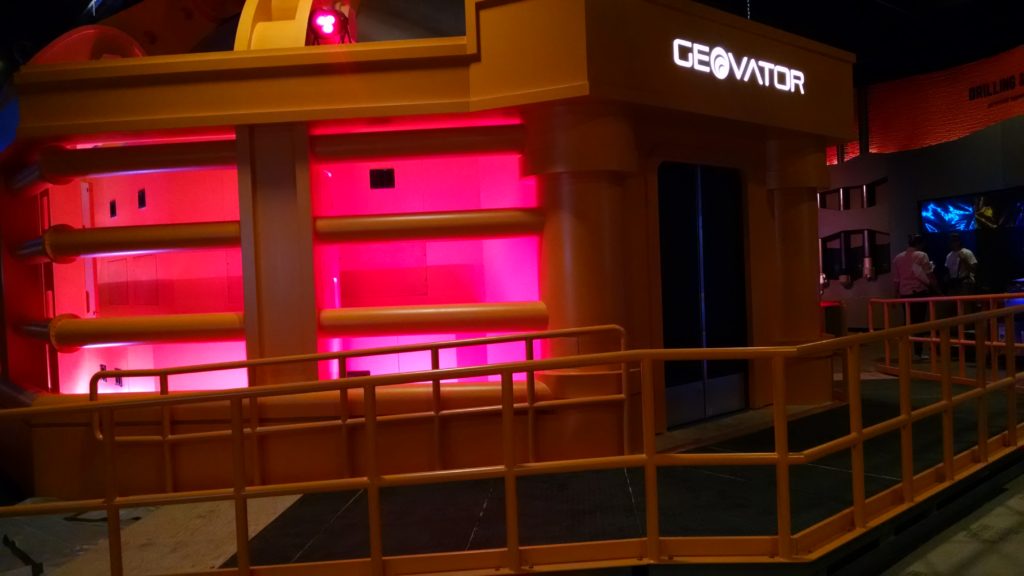 For more information, go to www.hmns.org. HMNS is located at 5555 Hermann Park Drive.
For more information, go to www.hmns.org. HMNS is located at 5555 Hermann Park Drive.
photo credit:
V. Sweeten